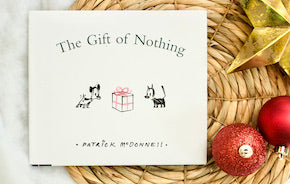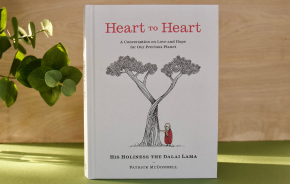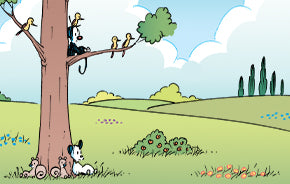By Avril A. Brown
We Brits are a pretty eccentric lot in the eyes of other countries. We drink tea, we say “sorry” when it’s not our fault, and we love our animals.
Or do we?
For a country that has search-and-rescue drone services for lost dogs, that has teams of volunteers to uplift dead cats and take them to a vet for microchip scanning, that is home to The Supervet, you’d think that love would extend to our wildlife.
Yes and no.
Me, I’m just back from the Royal (Dick) School of Veterinary Studies, just outside Edinburgh, Scotland, where I handed an injured crow found by my friend into the safekeeping of the wildlife ward. Yet also today I find that my local supermarket has installed netting and spikes to deter birds from their roof because they “have a problem with birds getting into the store and that’s a health risk.” Unless they have gaping holes in the roof, I’m not entirely sure how this will prevent birds getting in, especially if the loading bay doors are open.

Anti-bird netting has become a huge issue in the UK, particularly in England, in the last week. It started with the sand martins that returned to Norfolk, England from Africa, only to find that the Bacton cliffs they nest in were covered by netting. The local council claimed that the cliffs were subject to erosion and the netting was necessary while stabilizing work was done. A huge outcry ensued, with the RSPB (Royal Society for the Protection of Birds) claiming that the authority had used inappropriate material and failed to follow expert advice on installation. Sustained campaigning has resulted in much of the netting being removed and the birds allowed to return to their burrows.
A Facebook group was started in support of the Bacton sand martins (Riparia riparia), and its 12,000+ members are shining a quite shocking light on the assorted abuses of wildlife in our supposedly animal-friendly wee country. Netting is apparently the in-thing for developers, supermarket chains, and other businesses — with trees, hedges, and roofs being covered to prevent wild birds nesting “inconveniently.” In many cases, spikes have also been added as a further deterrent to stop the birds even being able to perch. You have to question if our connection to nature is so broken in our 21st century world that we are willfully denying wild birds a place beside us.
Of course, the reason developers and the like want to stop the birds nesting in the first place is that birds on the nest are protected from disturbance by the Wildlife and Countryside Act 1981 and the European Habitats Directive 1992 / Nesting Sites Directive. This brings any building work screaming to a halt, and costs money. In Scotland, however, the Scottish Natural Heritage (the government organization specifically tasked with “promoting, caring for, and improving the country’s nature and landscapes”) was heavily criticized in 2018 over the number of licenses (over 500) that it issued for the culling of wild birds.
Out of the 35 named species, five (herring gulls, house sparrows, ringed plovers, skylarks, and starlings) are Red-listed as being of conservation concern, whilst another 11 appear on the Amber list. The organization claimed that “the vast majority of licences were issued to protect crops or livestock, or for reasons of public health and safety, including the prevention of birds striking aircraft.” What chance does our wildlife have when those charged with its protection also oversee its destruction?
Seagulls seem to draw particular ire in urban areas, along with feral pigeons. Just half a mile along the road from where I live in Edinburgh, residents are demanding the removal of the noisy gulls which “terrorize” their children. This is a situation where SNH will issue a license, often to a non-expert contractor who can’t tell the difference between a herring gull (Larus argentatus) or lesser black backed gull (Larus fuscus), so that they can remove the nests and eggs of the gulls during the breeding season.
Yes, seagulls make for a pretty raucous dawn chorus — and we should know because they are nesting on all the roofs around us — and yes, they are super-protective of their young. But you know what, so are humans!
I know that I’m one of the lucky ones. I have a job that lets me be out in nature every day, in all weathers. I get to see the turn of the seasons, to enjoy nature in all its forms — trees, wildflowers, insects, birds, mammals. Just now, I can hear great spotted woodpeckers (Dendrocopos major) drumming for bugs, or if I’m lucky I’ll spot a tree creeper (Certhia familiaris) running up a tree trunk, or see a buzzard (Buteo buteo) on the wing. I might see roe deer (Capreolus capreolus) hinds in the woods, or startle a brown hare (Lepus europaeus) or send a pheasant (Phasianus colchicus) clattering into the sky. Later in the year, I’ll be looking forward to seeing parties of goldfinches (Carduelis carduelis) on the teasel (Dipsacus fullonum).
Have we really come to such a sad pass that we can’t live with the natural world around us? That the impulse is to destroy whatever nature is inconvenient to us? Do we really need nature to be sanitized and controlled and presented as entertainment? Or is it driven by ignorance, by fear, by greed? Whatever it is, it’s selfish and desperately short-sighted, and it makes me sad.
About the Author: After a long career in IT, Avril gave it up to follow her heart and work with animals. She is now a professional dog walker and pet sitter based in Edinburgh, Scotland. Avril has three cats of her own: a 17-year-old blue tortie named Katie, plus Maisie Mog and Hamish, who were both rescued from the streets of Bucharest, Romania.






















Comments (1)